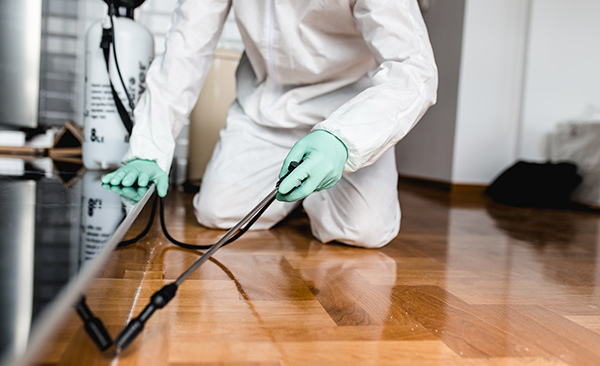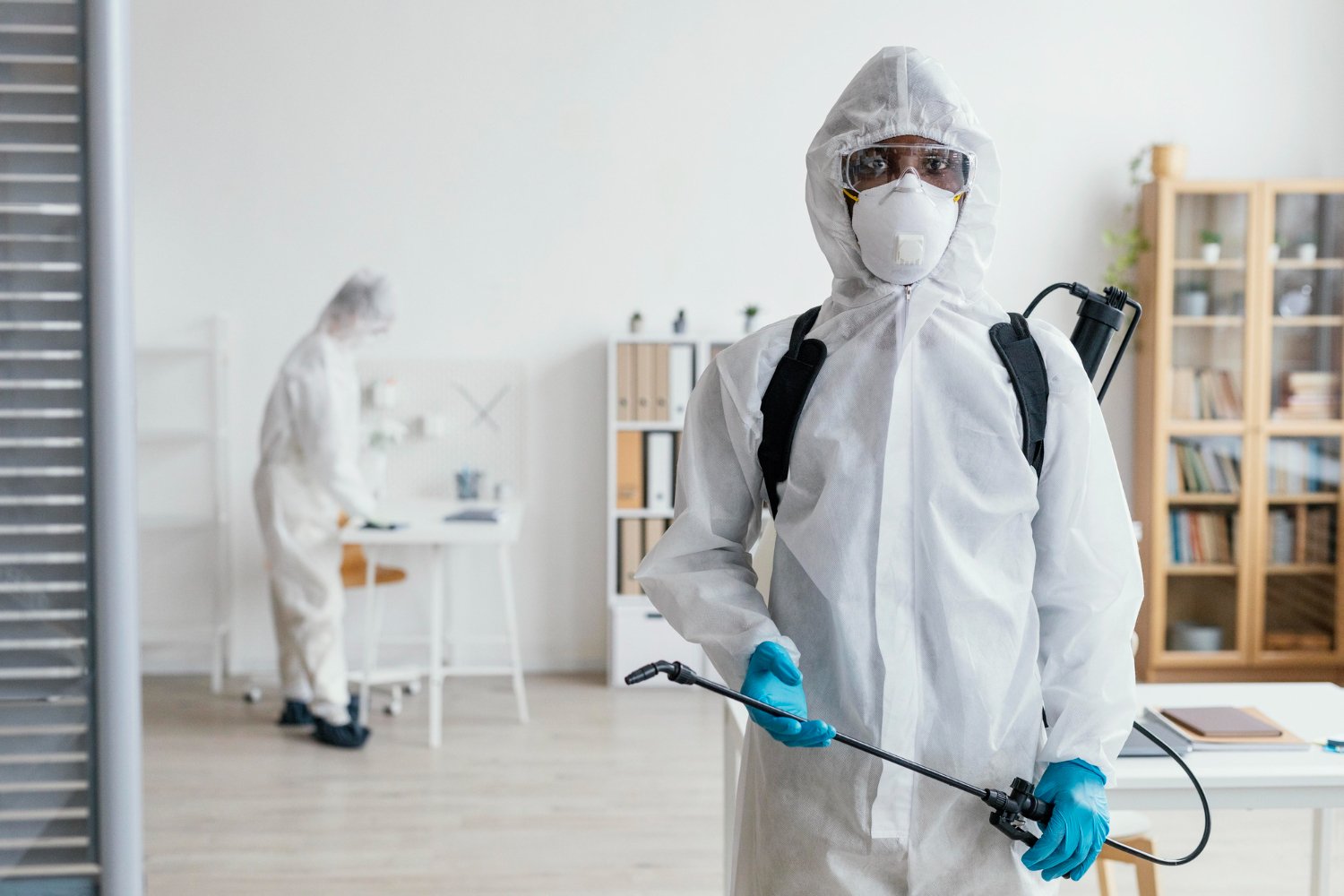Effective Pest Control to eliminate insects, rodents, and termites fast.
Eco-Friendly Insect Control Approaches for Taking Care Of Wild Animals in Urban Areas
Urban locations usually find themselves at the junction of human activity and wildlife, causing distinct obstacles in bug administration. Eco-friendly techniques stress lasting conjunction, utilizing techniques such as habitat alteration and natural repellents to mitigate human-wildlife problems. These strategies not just secure the setting but also boost area involvement in wildlife administration. As city populations proceed to expand, recognizing the dynamics of wildlife interactions comes to be significantly crucial. What ingenious techniques can be applied to make sure both environmental equilibrium and city safety and security? Exploring this inquiry exposes an engaging landscape of prospective remedies.
Recognizing Urban Wild Animals Dynamics
Recognizing Urban Wild animals Dynamics is important for creating efficient and environment-friendly insect control strategies. Urban locations are progressively becoming environments for various wild animals species, driven by variables such as environment fragmentation, food availability, and human advancement. Recognizing these characteristics allows for a nuanced strategy to pest administration that aligns with environmental principles.
Urban wildlife often includes varieties such as raccoons, squirrels, and birds, which adapt to city settings, locating niches in eco-friendly rooms, parks, and even suburbs. Their existence can lead to disputes with human beings, particularly when they make use of personnels for food and sanctuary. Recognizing the behaviors and environmental duties of these species notifies approaches that lessen adverse interactions while promoting biodiversity.
Moreover, recognizing the interdependencies within urban environments aids in recognizing vital locations for environment conservation and restoration. This understanding adds to the growth of incorporated pest management (IPM) methods that think about the ecological balance, thereby lowering dependence on hazardous chemicals. By promoting conjunction between people and urban wild animals, cities can produce much healthier settings that profit both homeowners and neighborhood environments, paving the way for lasting city living.
All-natural Repellents and Deterrents
All-natural repellents and deterrents supply a sustainable alternative to conventional bug control methods by harnessing the power of nature to keep undesirable varieties away. These green options commonly make use of plant-based active ingredients, crucial oils, and various other normally happening materials that discourage parasites without damaging the atmosphere.
One efficient natural repellent is peppermint oil, which is known to drive away rats and bugs. Its strong scent is undesirable to numerous pests, making it a prominent choice for city setups. Vinegar and citrus peels can serve as deterrents, as their solid odors are typically uninviting to different wildlife.
Additionally, diatomaceous earth is an all-natural powder that can be spread out in locations prone to parasite activity, effectively drying out and discouraging insects without posing dangers to non-target species. Garlic sprays and neem oil are recognized for their ability to push back a wide variety of pests, including both pests and larger wildlife.
Executing these all-natural repellents not only minimizes dependence on chemical pesticides however additionally promotes a much healthier city environment, cultivating a more balanced conjunction in between humans and wild animals. By making use of these approaches, metropolitan locations can effectively take care of pest populations while lessening ecological impact.
Habitat Adjustment Techniques
Efficient environment alteration strategies play an important duty in lasting pest administration by modifying the setting to make it less for pest invasions. By comprehending the eco-friendly dynamics of urban areas, building proprietors can implement strategic adjustments that hinder parasites while advertising biodiversity.
(Silverfish control Port Charlotte)One key strategy involves keeping correct cleanliness. This consists of normal waste elimination, safeguarding garbage can, and getting rid of standing water to minimize reproducing sites for bugs and rodents. Furthermore, landscape design practices such as selecting native plants can enhance ecological balance, providing habitats for useful microorganisms while lessening sources for bugs.
An additional vital strategy is to seal entry factors in buildings. Inspecting and fixing cracks in structures, wall surfaces, and windows can significantly minimize pest access. Developing physical barriers, such as fences or plant buffers, can inhibit wildlife activity into human-inhabited areas.
Integrated Insect Monitoring Practices
Structure upon environment modification techniques, integrated pest monitoring (IPM) practices offer an alternative approach to managing pest populations while minimizing environmental influence. IPM integrates numerous techniques, consisting of organic, cultural, mechanical, and chemical controls, to accomplish reliable bug management.
Biological control entails the intro of natural predators or bloodsuckers to reduce insect populaces. Social practices, such as crop turning and hygiene, disrupt pest life cycles and reduce their environments - Pest Control. Mechanical controls, like traps and barriers, supply prompt remedy for bug stress without chemical treatment
Chemical controls are utilized as a last option, concentrating on targeted applications that restrict damage to non-target varieties and the environment. The selection of ecologically friendly pesticides, when needed, is indispensable to the IPM structure. Additionally, keeping an eye on parasite populaces and analyzing possible damages aids educate decision-making, guaranteeing that interventions are timely and efficient.
Community Involvement and Education

(Pest inspection Port Charlotte)Workshops and informative sessions can gear up locals with knowledge about native varieties, environment preservation, and efficient safe insect administration methods. Collaboration with schools, neighborhood companies, and federal government agencies further boosts instructional outreach, making sure that necessary info reaches varied target markets.
Additionally, community-led efforts, such as neighborhood clean-up days and environment repair jobs, not only advertise biodiversity however also reinforce neighborhood ties. Pest control service. By motivating locals to share their experiences and monitorings, neighborhoods can develop targeted approaches that attend to particular neighborhood bug issues
Including feedback from homeowners right into pest monitoring plans makes it possible for a much more receptive and adaptive method to wild animals difficulties. Inevitably, notified and involved neighborhoods are vital to accomplishing lasting success in environment-friendly insect control, bring about healthier metropolitan environments click for more that appreciate both human and eco-friendly needs.

Final Thought
In verdict, eco-friendly insect control comes close to offer lasting remedies for managing metropolitan wild animals. By focusing on environment modification, using all-natural repellents, and applying incorporated pest management methods, communities can foster a harmonious coexistence with local fauna. Engaging locals through education and learning boosts recognition and motivates liable wild animals interactions. Ultimately, these approaches not only secure biodiversity yet likewise advertise environmental health, guaranteeing urban locations continue to be vivid ecological communities where human beings and wild animals grow with each other.